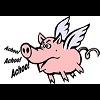[Closed] Borg Warner Efr Series Turbos
Announcements
-
Similar Content
-
Latest Posts
-
I think last I checked it was 35cm from fender to wheel center. I heard u can go up to 45-48cm before handling his impacted. But I need to check again. I know I was about 1.2 cm off being close to max recommended.
-
By Murray_Calavera · Posted
You'd need to weld on an external gate to achieve that number though. I can't remember seeing anyone make 500hp at the wheels with the stock manifold / internally gated turbo. -
Suspension Component Question Looking for some feedback based on people's experiences! I know this has been loosely covered in other threads but I can't find any direct answers/experience. I'm up for some bush/rod replacements and was interested in a hybrid approach between hardened rubber and pillowball kit. Why not choose one or the other? Well, this is for my daily driver, which I track once or twice a year. I like a stiff car and a sporty feel but I don't want to compromise the chassis too much with 100% pillowball gadgetry. I know from experience and a tonne of reading that not all components affect ride quality in the same way - eg. in my case, coilover top mounts should be hardened rubber as pillowball transfers way too many undesirable qualities and doesn't have much more upside than a good hardened rubber. But, pillowball tension rods translate to much better turn-in/steering response and make the car significantly sharper, without negatively impacting ride quality in a significant way. I'm not TOO bothered by NVH (to a degree). So, with context out of the way, does anyone have any experience with a hybrid approach as mentioned above? I'm going to replace all components over time so am seeking guidance on: - front tension rods - upper camber arms - rear lower control arm - rear traction rod - rear upper camber arm - rear toe adjuster rod Secondly, is there any reason why this is a bad idea? Or any other info/wisdom that I might not be considering. Cheers 🫶
-
By Chris_Guthrie · Posted
That's good to hear I'll stick with the stock I hear they are good for 500hp and I'm only shooting for 350-400 once I can get this thing sorted and get to actually building it. -
By Dose Pipe Sutututu · Posted
The stock one will outperform any aftermarket standard position exhaust manifold. If you don't believe me, do a back to back test (same turbo, same boost, same timing) and you'll be super surprised.
-







Recommended Posts